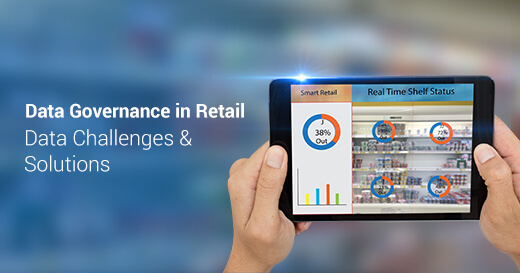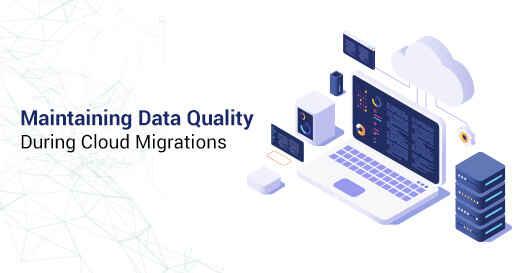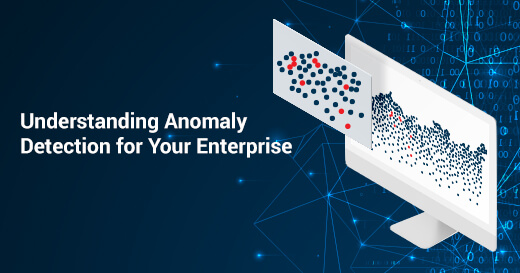Why is Your Data Governance Strategy Failing?
Written by Imran Abdul Rauf
Technical Content WriterOrganizations incur thousands of dollars in losses each year due to failed data-based initiatives. Although several factors are to blame, poorly constructed and executed data governance strategies are often cited as significant contributors.
Although most organizations believe that robust data governance processes are vital for their performance, especially when it comes to data-reliant operations and teams, nearly half of them never access, measure, and gauge the performance of their programs.
Various barriers prevent businesses from achieving their IT objectives and realizing the true potential of a data governance framework.
Reasons why your data governance strategy is failing?
Data governance initiatives are a substantial part of your comprehensive data strategy, and knowing the ins and outs and pitfalls and opportunities is essential to succeed.
Handling too much or too little at once
Companies often make the mistake of attempting to solve all of their data-related problems through a single initiative. Unfortunately, the strategy could do more harm than good and finish before your business sees positive results.
Similarly, if you only focus on specific aspects of your data governance strategy, your team might likely lose sight of the comprehensive, end-to-end process.
It is preferred to focus on a particular data asset and its lifecycle. During the idea validation and testing phase, emphasize the most vulnerable areas in the systems or where data-based issues cause the most damage.
It’s better to incorporate further layers of testing and approval later instead of making changes once the process is in motion. Once approved and aligned with your IT objective, the technology and tools can be implemented in other data governance problems.
Lack of management support
If the management isn’t impressed by data governance initiatives and is only concerned about the incurred costs, the strategy will fail.
Initially, the predefined processes work when executed; second, due to cost limitations, the significant improvements in the system won’t work. Consequently, the program often concludes before its proper completion.
Regulations like GDPR have made it easier for businesses to source the budget needed to start a data governance project.
Also, the management’s discretion should allow long-term resources to be available to finance and facilitate all the required stakeholders from data stewards and chief data officers, tools, and roles for a successful governance program in a consistent manner.
Communication gap and incompetent change management
Implementing a robust data governance program will trigger various changes in existing processes. However, without a sound strategy in place, the expected execution and benefits won’t produce the anticipated results, and the strategy will only be perceived as an added burden.
Always keep clear documentation of the goals achieved on an incremental level, instead of one grand goal that hasn’t been attained due to a lack of management support.
Data governance exceeds the typical boundaries of any IT department and can affect various business touchpoints. For instance, if there is a communication gap between IT and a particular business area, this prominent silo work mindset can be responsible for many data quality problems, which can further affect the effectiveness of the entire data strategy.
When crafting an effective data governance strategy, ensure that all the business segments involved are equally accountable for all the associated successes and failures.
Unclear goals difficult to quantify
No data governance framework will be successful if the team isn’t sure how to measure its performance and where it’s headed.
Your IT roadmap should include clear information on what business and performance KPIs it wants to achieve and the project scope finalized before starting the governance program.
The goals should be measurable and, importantly, highlight KPIs that convince the management to keep providing support. Moreover, be aware of changes in costs, data reuse rates, reduction in error rates, improvements in user satisfaction, shorter time leads, and more.
Regularly observe all the above metrics and share the findings and results with the associated stakeholders. The purpose is to keep the management interested in the data governance program and provide support for the continuity of the governance program.
Focusing on tools and not processes
Having your IT department equipped with efficient IT and data strategy and management tools doesn’t indicate that there is no need for a data governance team.
Before your data governance strategy is good to go, you need a tested organization structure and process and responsibilities defined for every team member before deploying any tool for support.
Clarify details about data ownership as to whom the data belongs. Additionally, the guidelines should state who changes which data assets, who authorizes those changes, the person responsible for adhering to the created quality benchmarks, and who is accountable for handling data security.
No tool can determine these decisions but the processes underlying your company’s data governance rulebook.
Initiatives are considered a project and not an ongoing program
Data governance and data quality are not one-time projects with predefined start and completion dates; both are ongoing projects.
Hence, businesses often fail to understand that both programs require ample funding and resources to accomplish specific goals.
IT teams need to set up appropriate tools, processes, and tech stacks to accomplish the organization’s long-term goals and implement an end-to-end framework and functionality.
On the other side, the business can work towards the actual data improvements by fixing the loose data in the system, keeping quality checks, finding the root causes of data-related issues, and recommending subsequent enhancements and fixes.
Lack of clarity on expectations, accountability, and ownership
The concept and applicability of fluid organization don’t apply to data governance and data quality programs. Instead, the activities require transparency in roles, ownership, and responsibilities.
There needs to be a clear line between the company and IT objectives to reduce the chances of future effort duplication and conflicts in resource allocations, budgeting, and expectations and outcomes.
IT can help the business with proactive data profiling, installing tools and processes, and training business stewards on using those tools and data lineage.
On the other side, the business can work towards the actual data improvements by fixing the loose data in the system, keeping quality checks, finding the root causes of data-related issues, and recommending subsequent enhancements and fixes.
The impact of data governance failures
Failure to execute data governance practices can cause repercussions for your organization and IT objectives. Non-existent, inappropriate, and incompetent governance leads to insecure, inconsistent, and unreliable data quality.
Incorrect data impacts the quality of analytics and business intelligence insights. While it only gets more challenging for teams to merge, verify, and access data later.
Data governance failures also hinder internal and external regulatory compliance and performance. The company dramatically risks losing its customers' trust following a disastrous breach.
Other consequences of governance failures include IP risks, security breaches, expensive storage, and Ransomware attacks.
Start with a top-notch data governance strategy
Crafting a custom data governance strategy constitutes various data practices and a thorough understanding of the above problems.
Related content: Top 4 Data Governance Practices You Need to Know for 2022
Every data category, such as behavioral, transactional, performance, operational, temporal, etc., has its data policies.
If you’re somewhat unsure where to start for your business, talk to our experts at Royal Cyber and learn how our data governance team can help you redefine your business through efficient, custom data frameworks.



